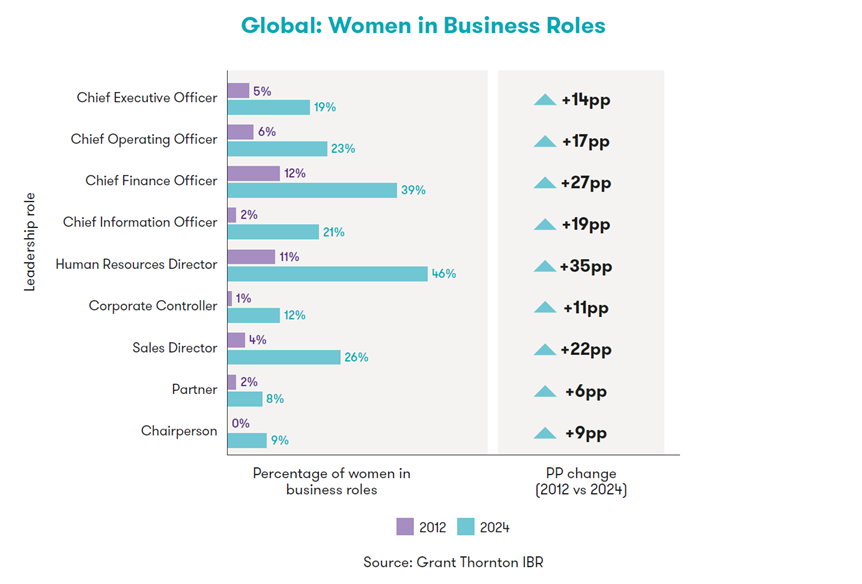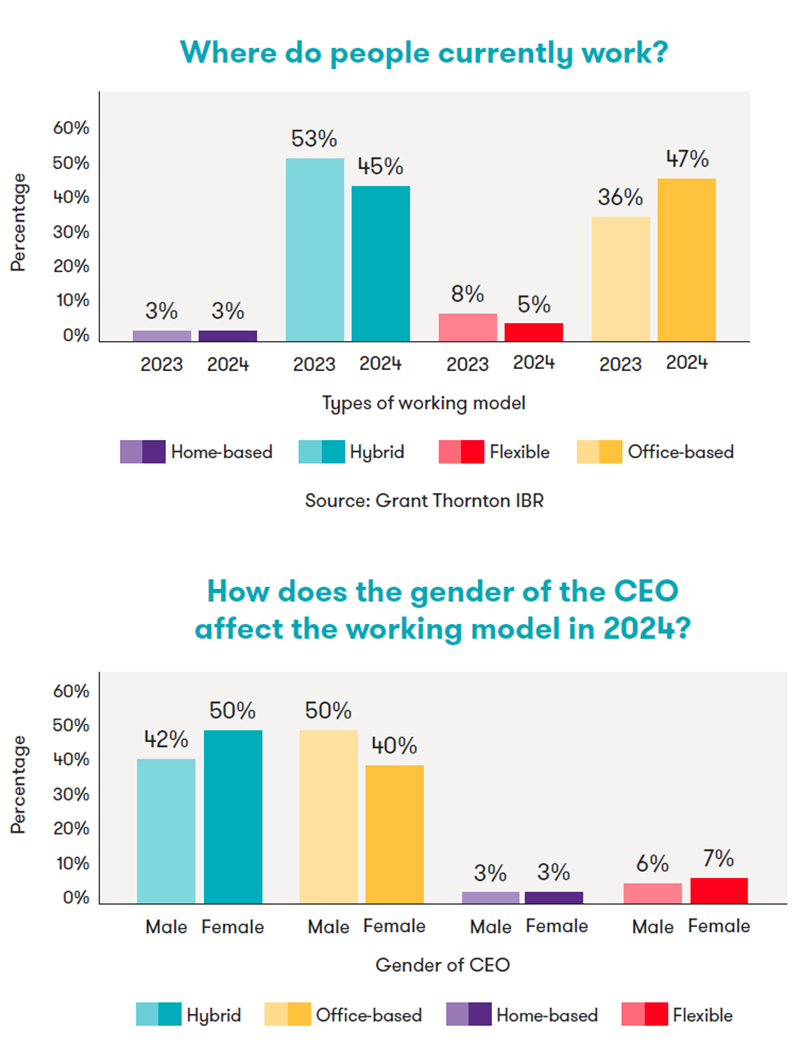Taxes, accounting, law and more. All the key news for your business.
Grant Thornton’s regular Women in Business report, published to mark International Women’s Day, has reached a major milestone. In fact, 2024 frames two decades of tracking and measuring the representation of women in leadership positions in mid-sized companies around the world. Although their share has increased from 19.4% to 33.5% over the period, progress is still relatively slow. At the current rate, parity will only be reached in 2053.
In addition, one of the most significant year-on-year changes is the decrease in the percentage of women among CEOs. While last year they represented 28%, this year it is only 19%. Among senior positions, women most often hold the position of HR Director, more specifically in 46% of the cases. HR is thus the only area, where gender parity is within reach.

The first two ways to accelerate progress towards gender equality are about integrating the topic of diversity into a company’s internal philosophy. According to the report, companies that have a separate strategy in this area have demonstrably better numbers. However, it is not about the strategy itself, but also about who is in charge of its implementation. The data show that the highest progress in this area is achieved by companies, where the implementation of the diversity strategy is in the diction of the CIO together with a woman in a senior management position.
“There is an old saying: what gets measured gets done. This is as true for women in business as for any other element of business performance,” says Maddie Wollerton Blanks, director of people consulting at Grant Thornton UK. “Our analysis shows that when a company tracks clear diversity and equality indicators, it performs better than the global benchmark in the area,” she adds.
The final route to parity is flexible working. In the last 12 months, however, there has been a dramatic shift back to a preference for office-based work in mid-sized global companies. Currently, 47% of businesses are predominantly office-based (up from 36% last year) and 45% are hybrid (up from 53% last year). Data have already shown a clear causality in the past – the higher the share of office-based work, the lower the share of women in managerial positions.
It is somewhat ironic that it is mainly men who are behind the return of the preference for office work. In fact, half of the businesses with a male CEO require office work, compared to only 40% of women-led businesses. Moreover, companies with a predominantly office-based workforce are the only ones, where the proportion of women in senior management roles falls below the global benchmark.

Peter Bodin, CEO of Grant Thornton International, summarises the issue as follows: “Our Women in Business research has made a significant contribution to the global debate on equality in the workplace for 20 years. While we have seen some positive changes over that time, we also know that sustainable change requires a focused effort and clear accountability from the leadership of each organisation. Through Grant Thornton International Business Report research and the pathways we identify, we want to provide mid-sized organisations with a roadmap to accelerate progress and build more diverse, resilient and successful businesses.”
If you are interested in the topic, you can download the full report.